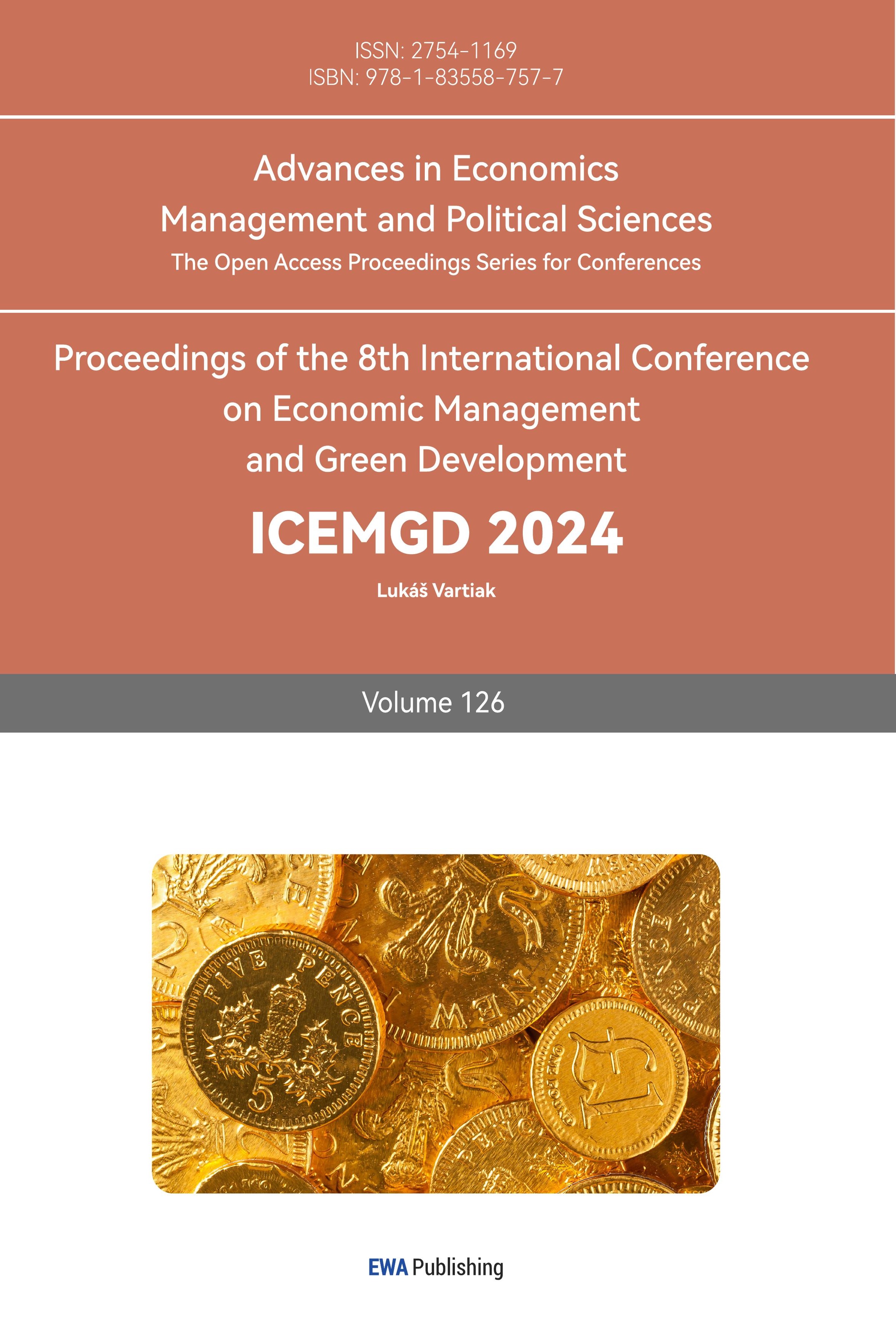1. Introduction
The 2011 Fukushima nuclear disaster, triggered by a powerful earthquake and tsunami, led to significant radioactive contamination of groundwater and the marine environment [1]. Over a decade later, Japan's decision to release treated but still radioactive wastewater into the Pacific Ocean, implemented in August 2023, has sparked intense debate among neighboring countries, environmental groups, and local fishing communities.
Research on the Fukushima nuclear disaster and subsequent effects has been excellent, with a focus on immediate and long-term environmental and socio-economic impacts. Hasegawa, 2012, focused on the initial response to the disaster and emphasized that a huge number of radioisotopes—among them cesium-137—were immediately released into the environment and remained in the ecosystem. Buesseler et al. evaluated in detail the contribution of ocean currents, in particular the Kuroshio current, to the dispersion of this radioactive material in the Pacific, bringing up concerns about global contaminant dispersion and impacts on marine life. A further investigation by Tateda et al. [2] focused on the socio-economic impacts on the Japanese fishing industry. This research concluded with proof of enormously reduced seafood exports and local consumption due to concerns over pollution, hence indicating long-term economic impacts for coastal communities. On the other hand, these studies underline that in case this happens, strong monitoring and modeling efforts will be required to understand possible environmental effects and decide on mitigative measures against negative impacts.
This study aims to examine the multifaceted impacts of the Fukushima nuclear leak and wastewater discharge. By combining multiple data sources into an accessible visual report, we seek to enhance public understanding, inform policy decisions, and contribute to strategies for mitigating the environmental and societal impacts of nuclear incidents and waste management.
2. Data and Materials
2.1. Research Area
Fukushima, located on Japan's eastern Pacific coast, is near Lake Inawashiro and the Kuroshio Current, a powerful western boundary current (Figure 1). Part of the North Pacific Gyre, the Kuroshio system includes four main currents. The strength and complexity of this current system could accelerate the migration of nuclear effluent, potentially impacting environmental health and ecosystems along the coastlines of neighboring nations more rapidly than might otherwise be expected. Understanding these oceanographic dynamics is crucial for assessing the potential spread of contaminants and their effects on surrounding areas.
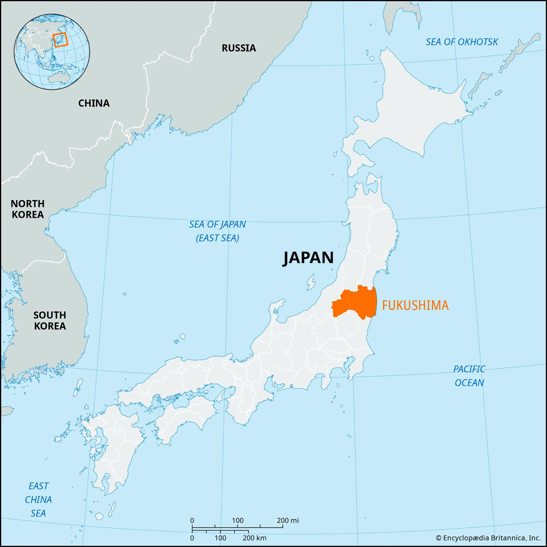
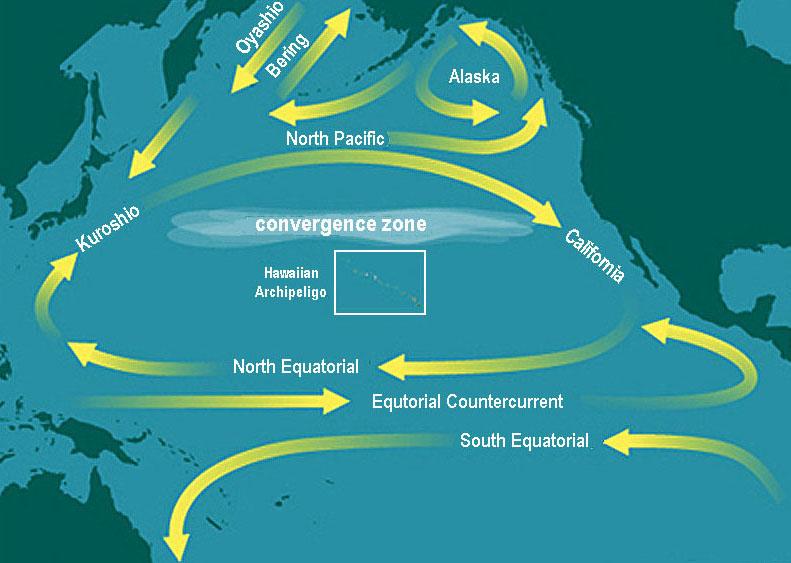
Figure 1: (a) Location of Fukushima [3] (b) Ocean currents in the North Pacific region (obtained from NOAA) [4].
2.2. Data
The core dataset in this study includes fish catch statistics from 2003 to 2023 for Japan, which were obtained from the North Pacific Anadromous Fish Commission [3]. Additionally, the research utilizes detailed monthly export data from Japan's fishery sector for the period from 1983 to 2023, sourced from Trading Economies [4]. This export data provides insights into the total annual exports and the year-over-year changes in Japan's fishery exports, enhancing our understanding of the economic trends within the sector. Besides, Japan’s annual GDP and population are obtained from the World Bank (https://databank.worldbank.org/).
2.3. Physical Model
This study employs a conceptual model to describe the various mechanisms involved in the dispersion of radioactive contaminants through the marine environment. The model has three main processes: migration, dispersion, and attenuation. [5] Migration is the process by which the contaminants, under different external forces, move away from their source. Dispersion refers to the spreading of contaminants in a larger area by processes involving turbulent mixing and molecular diffusion. Attenuation can be described as the reduction in a certain concentration of contaminants over time through various natural processes, such as radioactive decay, biodegradation, and dilution.
2.4. Correlation and Multivariate Analysis
In this respect, statistical analyses such as Pearson correlation analysis and multivariate analysis are carried out considering the overall effects of the Fukushima nuclear wastewater release on various parameters. These methods enable us to look at the relationships among variables and, in turn, find significant predictors for environmental and economic outcomes.
Pearson's correlation analysis measures the linear relationship between two continuous variables ( \( {x_{i}} \) and \( {y_{i}} \) ), which can be estimated using the following equation:
\( r=\frac{\sum ({x_{i}}-\bar{x})({y_{i}}-\bar{y})}{\sqrt[]{\sum {({x_{i}}-\bar{x})^{2}}\sum {({y_{i}}-\bar{y})^{2}}}}\ \ \ (1) \)
where r is the correlation coefficient ranging from -1 to 1.
We further apply the multivariate analysis to examine the relationship between multiple independent variables and a single dependent variable. The formula for the multivariate model is given as follows,
\( Y= {β_{0}}+ {β_{1}}{X_{1}}+{β_{2}}{X_{2}}+…+{β_{n}}{X_{n}}+ ε\ \ \ (2) \)
where Y is the dependent variable and \( {X_{1}} \) , \( {X_{2}} \) , … are the independent (predictor) variables. \( {β_{1}} \) , \( {β_{2}} \) … are the coefficients for each predictor, \( {β_{0}} \) is the intercept. \( ε \) is the error term, accounting for the variation in 𝑌 not explained by the 𝑋 variables. In this study, we used multiple linear regression to model the effects of nuclear wastewater discharges on catch, considering various predictors such as stock, Cs-137 concentration, and GDP.
3. Results and Discussion
3.1. Short-term Impact of Fukushima Wastewater Release
Tritium concentrations in Japan peaked below 1.0 Bq in September before declining in October (Figure 2). Concurrently, fish exports dropped from over 22,000 units in August to under 19,000 in October, suggesting a link between rising tritium levels and declining exports. This trend could result from wastewater discharges or seasonal oceanic processes.[6] Previous studies have shown that nuclear contamination concerns significantly impact seafood markets and consumption.[7] The observed pattern aligns with earlier research on radioactive content's financial effects on the fishing industry. Buesseler's work on long-term environmental and economic impacts of marine radioactive pollutants further supports these findings.[8] The results indicate a probable causal relationship between increasing tritium concentrations and decreasing fish exports, consistent with prior research on nuclear pollution's effects on the seafood sector.
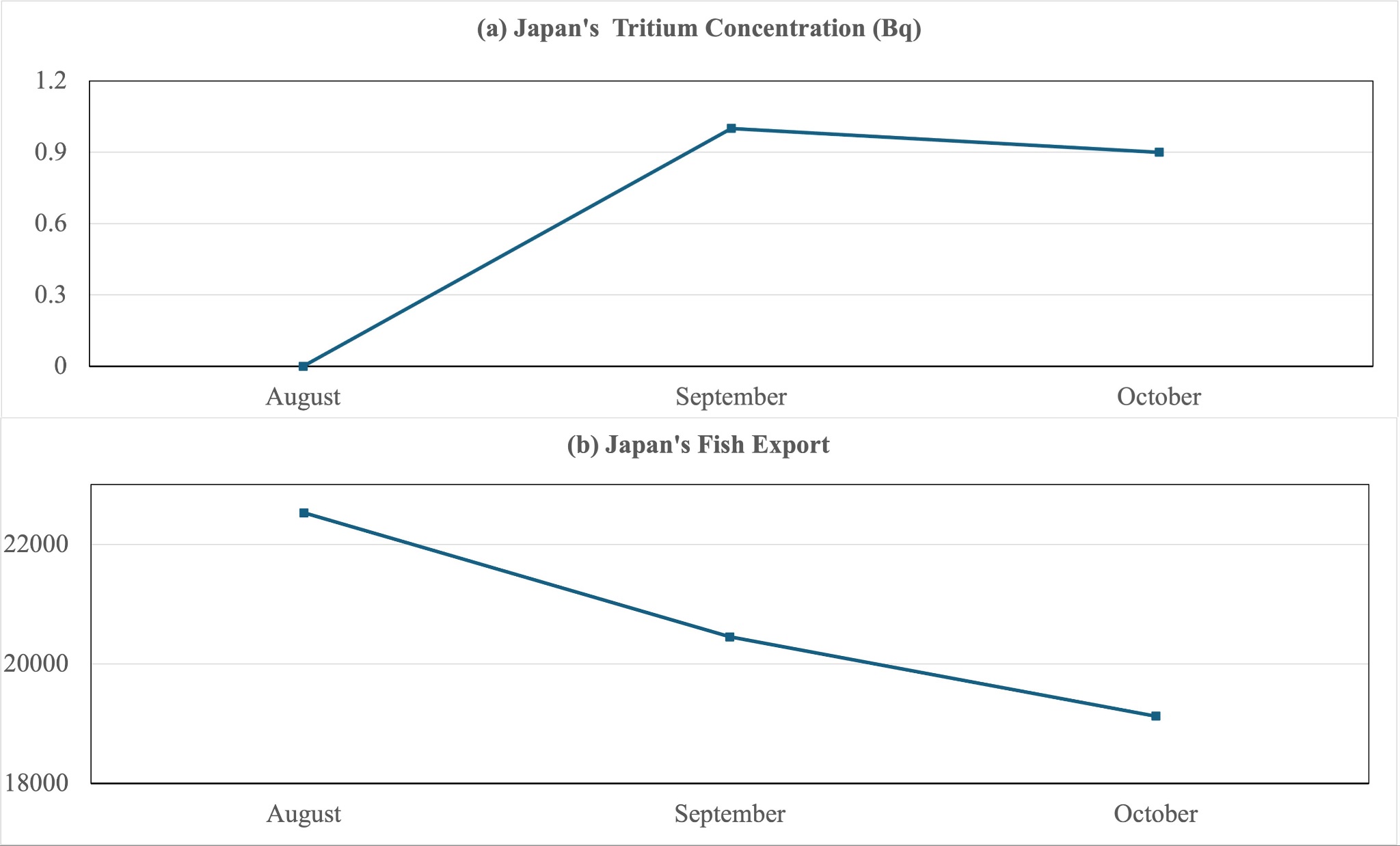
Figure 2: Fukushima's Tritium Concentration and Fish Export from August to October 2023
3.2. Simulating the impact of the Fukushima nuclear accident on the fish industry
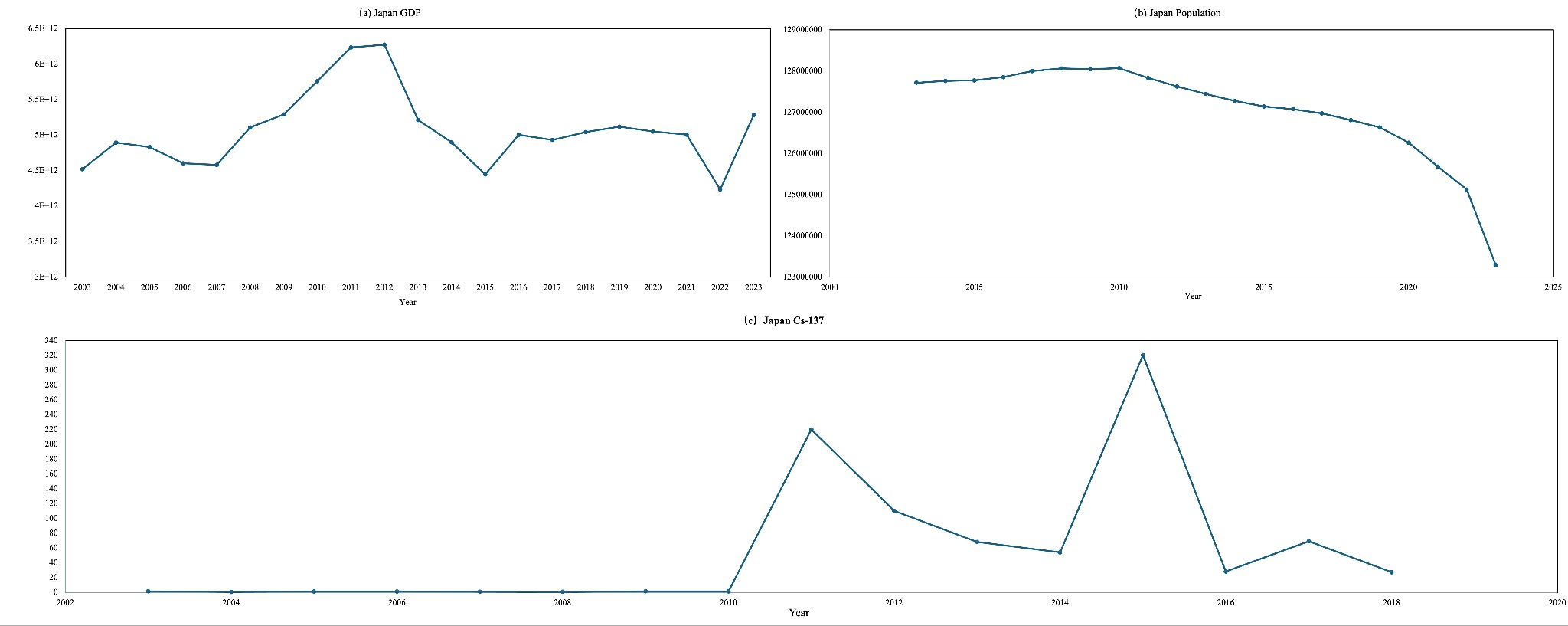
Figure 3: Japan GDP, Japan population, and Japan Cs-137 during 2003-2023.
Figure 3a illustrates Japan's gross domestic product (GDP) trajectory from 2003 to 2023. GDP generally trended upward before 2012, peaking in 2011–2012. Following 2012, there was a notable drop; subsequently, there were oscillations; then, about 2020, there was another notable drop, with a slight recovery evident in 2023. Figure 3b shows the Japanese population over the same span. Around 2010, the population stayed rather constant; afterward, it started to drop gradually; by 2020, the steeper drop was evident. Figure 3c This graph displays the cesium-137 (Cs-137) concentration in Japan, which peaks in 2010 in line with the Fukushima nuclear accident. After 2010, levels changed; they peaked in 2014 and dropped progressively later.
The GDP trajectory presents an intriguing anomaly: its peak in 2011-2012 aligns with the Fukushima disaster of 2011, a period when one would typically anticipate immediate adverse economic effects from such a catastrophe. The subsequent decline and fluctuations in GDP could be attributed to the long-term repercussions of the disaster, compounded by global economic events could help to explain the latter drop and fluctuation in GDP. Second, the population graph illustrates that, since about 2010, Japan's population has kept declining, even more so until 2020. This trend matches Japan's well-documented demographic problems, which have worsened recently: an aging population and low birth rate. [9] At last, the Fukushima accident directly explains the significant increase in cesium-137 levels observed in 2010. Kimura and Managi's 2019 analysis of the financial effects of the Fukushima accident notes that although the immediate effects were severe, government stimulus and restoration activities could have momentarily raised GDP. However, long-term consequences include changes in energy policies and decommissioning expenses, which generate economic turbulence. [10] Consistent with the noted population drop, the UN research (2019) emphasizes Japan’s demographic issues. Population falls mostly result from low fertility and increasing life expectancy. Parallel to these demographic trends, studies have monitored Cs-137 levels following the Fukushima nuclear accident, documenting initial peaks followed by fluctuations caused by environmental dispersion and ongoing decontamination efforts. These findings align with previous research and underscore Japan's long-term demographic and economic challenges. In the economic sphere, Gross Domestic Product (GDP) trends reveal initial resilience followed by oscillations, mirroring studies on the Fukushima accident's immediate and long-term economic impact. The population decline reflects Japan's broader demographic issues, while Cs-137 level patterns correspond with environmental studies tracking radioactive contamination in the aftermath of the Fukushima disaster.
Table 1 presents correlation coefficients between variables Fishing Catch, Fishing Export, Cs-137, Population, and GDP. Fishing Catch shows negative correlations with Fishing Export (-0.6691) and Cs-137 levels (-0.4737), a positive correlation with Population (0.4400), and a slight negative correlation with GDP (-0.1274). Fishing Export exhibits a weak positive correlation with Cs-137 (0.2843), a strong negative correlation with Population (-0.7408), and a moderate negative correlation with GDP (-0.3205). Cs-137 levels demonstrate a negative correlation with Population (-0.3316) and a weak positive correlation with GDP (0.1928). The population has a slight negative correlation with GDP (-0.1587). GDP mixes its correlation with other variables. A powerful negative correlation has been striking between fish catch and fish export –0.6691. Intuitively, one might expect a higher fishing catch correlated with exports. This discrepancy may point toward the strong influence of factors other than total catch that drive export levels, such as the quality of fish, market demand, or processing capability. One of the interesting points is that there seems to be a positive relationship between Cs-137 and fishing exports, which a person would expect to be much more negative since higher levels of contamination should lower exports driven by concerns for health and rejection from markets. This unexpected result may indicate the presence of other determining factors in export levels, or some sort of lag effect takes place where exports have not caught up with contamination levels. The highly negative correlation (-0.7408) between Population and Fishing Export may mean that with a smaller population, there is an increased reliance on fish exports to support the economy, or it might reflect a reduction in domestic consumption, allowing more for export. The mixed signs of the correlations of GDP with other variables already suggest complex interactions. The weak negative correlations between GDP and both fish catch (-0.1274) and fish export (-0.3205) suggest that the fishing industry may not be a primary driver of GDP, reflecting the diversified nature of Japan's economy.
Table 1: Correlation coefficient between different variables
Correlation Coef. | Fishing Catch | Fishing Export | Cs-137 | Population | GDP |
Fishing Catch | 1 | -0.669 | -0.474 | 0.440 | -0.127 |
Fishing Export | -0.669 | 1 | 0.284 | -0.741 | -0.320 |
Cs-137 | -0.474 | 0.284 | 1 | -0.332 | 0.193 |
Population | 0.440 | -0.741 | -0.332 | 1 | 0.159 |
GDP | -0.127 | -0.320 | 0.193 | 0.159 | 1 |
Table 2: Coefficients of multivariate analysis. The dependent variable is Fish Catch. Independents are Cs-137 concentration, population, and GDP.
Model | Unstandardized Coefficients | Standardized Coefficients | t | Sig. | 95.0% Confidence Interval for B | ||
B | Std. Error | Beta | Lower Bound | Upper Bound | |||
(Constant) | 4399209.85 | 810346.59 | -5.43 | 0.00 | -6164803.39 | -2633616.30 | |
Population | 0.036 | 0.006 | 0.803 | 5.57 | 0.00 | 0.02 | 0.05 |
Cs137 | -23.50 | 29.028 | -0.116 | -0.81 | 0.43 | -86.74 | 39.75 |
GDP | -1.576E-08 | 0.000 | -0.473 | -3.40 | 0.01 | 0.00 | 0.00 |
Table 2 presents the results of a multivariate analysis with Fish Catch as the dependent variable and Cs-137 concentration, Population, and GDP as independent variables. The population shows a statistically significant positive association with Fish Catch (coefficient = 0.036, standard error = 0.006, beta = 0.806, t-value = 5.556, p < 0.001). This shows that statistically significant population and fish capture have a positive connection. The analysis indicates a negative but statistically non-significant relationship between Cs-137 levels and Fish Catch (coefficient = -23.499, standard error = 29.028, beta = -0.116, t-value = -0.810, p = 0.434). Interestingly, GDP demonstrates a statistically significant negative association with Fish Catch (coefficient = -1.576E-08, standard error = 0.000, beta = -0.493, t-value = -3.405, p = 0.005). This inverse relationship suggests that as Japan's economy grows, fish catch decreases. Population and catch have a somewhat significant positive association, meaning that catch usually rises as the population rises. These findings align with previous studies highlighting the significant influence of population size and economic conditions on fish catch. Still, given Japan's diminishing demographic trend, this also presents a challenge for sustainability. Higher degrees of radioactive contamination can lower fish catch, according to the negative coefficient of Cs-137 (-23.499). Still, this link lacked statistical significance—p = 0.434. This could suggest that although contamination is a problem, other elements could lessen its impact on fish harvest or insufficient data could prevent enough capture of this effect. Statistically, the negative association between GDP and fish capture (-1.576E-08) is exciting. This implies that the catch lowers with economic development. This could be the result of Japan's reliance on fisheries declining as other industries (such as technology and services) grow or of harsher rules and sustainability initiatives, where catches fall as GDP rises. The results match studies showing that fish capture is highly influenced by population size and economic situation. The non-significant link between Cs-137 and Fish Catch could imply that other environmental or policy elements could help to reduce the direct impact of radioactive pollution.
4. Conclusion and Implication
This research investigated the consequences of the Fukushima nuclear disaster on nuclear wastewater discharges and fisheries, population, economy, and environmental health in Japan. Statistical techniques involving correlation, multiple regression, and residual diagnostics were used in the present study to determine the relationships among independent variables of Cs-137 concentration, catch, fishery exports, population, and gross domestic product. Complex relationships and dynamics were found, such as the high negative correlation of Cs-137 concentrations with fish catch and the effects of demographic and economic factors in fisheries.
This study’s primary contribution is to provide a holistic analytical framework that merges variables from the environment, economy, and demography to draw out a complete and deep understanding of the pre- and post-disaster impacts of the Fukushima disaster. The application of multivariate analysis to elucidate the impact of these variables on fisheries adds depth to the investigation. It emerged that the association between Cs-137 and catch was not significant in this study, suggesting the potential influence of other factors, such as effective decontamination efforts or unmeasured variables related to fisheries. This research thus may not be fully representative of future trends or unexpected changes in the environment or economy because of the limitations of data used and reliance on historical data.
References
[1]. Hasegawa, K. (2012). Facing nuclear risks: Lessons from the Fukushima nuclear disaster. International Journal of Japanese Sociology, 21(1), 84-91.
[2]. Takeuchi, K., Ichikawa, K., & Elmqvist, T. (2016). Satoyama landscape as social–ecological system: historical changes and future perspective. Current Opinion in Environmental Sustainability, 19, 30-39.
[3]. Statistics NPAFC. (n.d.). https://www.npafc.org/statistics/
[4]. Japan Exports of Fish & Fish Preparations(1983-2021 Data) 2022-2023 Forecast. (n.d.). Tradingeconomics.com. https://tradingeconomics.com/japan/exports-of-fish-fish-preparations
[5]. Liu, Y., Guo, X., Li, S., Zhang, J., & Hu, Z. (2021). Discharge of treated Fukushima nuclear accident contaminated water: macroscopic and microscopic simulations. National Science Review, 9(1). https://doi.org/10.1093/nsr/nwab209
[6]. Isles, S., Rose, M., Nilssen, L., Hinton, D., Harrison-Day, B., Park, T. L., & Wilson, P. W. (2021). Environmental and Economic Recovery Post-Fukushima Daiichi Nuclear Disaster: Isotope Characteristics and the Recovery of a Crippled Fisheries Industry. Journal of Scientific Research and Reports, 27(4), 53-59.
[7]. Tateda, Y., Tsumune, D., & Tsubono, T. (2013). Simulation of radioactive cesium transfer in the southern Fukushima coastal biota using a dynamic food chain transfer model. Journal of environmental radioactivity, 124, 1-12.
[8]. Buesseler, K., Dai, M., Aoyama, M., Benitez-Nelson, C., Charmasson, S., Higley, K., ... & Smith, J. N. (2017). Fukushima Daiichi–derived radionuclides in the ocean: transport, fate, and impacts. Annual review of marine science, 9(1), 173-203.
[9]. Jack, D. (2016). The issue of Japan's aging population.
[10]. Zhang, D., Zhang, Z., & Managi, S. (2019). A bibliometric analysis on green finance: Current status, development, and future directions. Finance Research Letters, 29, 425-430.
Cite this article
Wang,R. (2024). Nuclear Energy and Accident: A Case Study of the Fukushima Wastewater Release . Advances in Economics, Management and Political Sciences,126,79-85.
Data availability
The datasets used and/or analyzed during the current study will be available from the authors upon reasonable request.
Disclaimer/Publisher's Note
The statements, opinions and data contained in all publications are solely those of the individual author(s) and contributor(s) and not of EWA Publishing and/or the editor(s). EWA Publishing and/or the editor(s) disclaim responsibility for any injury to people or property resulting from any ideas, methods, instructions or products referred to in the content.
About volume
Volume title: Proceedings of the 8th International Conference on Economic Management and Green Development
© 2024 by the author(s). Licensee EWA Publishing, Oxford, UK. This article is an open access article distributed under the terms and
conditions of the Creative Commons Attribution (CC BY) license. Authors who
publish this series agree to the following terms:
1. Authors retain copyright and grant the series right of first publication with the work simultaneously licensed under a Creative Commons
Attribution License that allows others to share the work with an acknowledgment of the work's authorship and initial publication in this
series.
2. Authors are able to enter into separate, additional contractual arrangements for the non-exclusive distribution of the series's published
version of the work (e.g., post it to an institutional repository or publish it in a book), with an acknowledgment of its initial
publication in this series.
3. Authors are permitted and encouraged to post their work online (e.g., in institutional repositories or on their website) prior to and
during the submission process, as it can lead to productive exchanges, as well as earlier and greater citation of published work (See
Open access policy for details).
References
[1]. Hasegawa, K. (2012). Facing nuclear risks: Lessons from the Fukushima nuclear disaster. International Journal of Japanese Sociology, 21(1), 84-91.
[2]. Takeuchi, K., Ichikawa, K., & Elmqvist, T. (2016). Satoyama landscape as social–ecological system: historical changes and future perspective. Current Opinion in Environmental Sustainability, 19, 30-39.
[3]. Statistics NPAFC. (n.d.). https://www.npafc.org/statistics/
[4]. Japan Exports of Fish & Fish Preparations(1983-2021 Data) 2022-2023 Forecast. (n.d.). Tradingeconomics.com. https://tradingeconomics.com/japan/exports-of-fish-fish-preparations
[5]. Liu, Y., Guo, X., Li, S., Zhang, J., & Hu, Z. (2021). Discharge of treated Fukushima nuclear accident contaminated water: macroscopic and microscopic simulations. National Science Review, 9(1). https://doi.org/10.1093/nsr/nwab209
[6]. Isles, S., Rose, M., Nilssen, L., Hinton, D., Harrison-Day, B., Park, T. L., & Wilson, P. W. (2021). Environmental and Economic Recovery Post-Fukushima Daiichi Nuclear Disaster: Isotope Characteristics and the Recovery of a Crippled Fisheries Industry. Journal of Scientific Research and Reports, 27(4), 53-59.
[7]. Tateda, Y., Tsumune, D., & Tsubono, T. (2013). Simulation of radioactive cesium transfer in the southern Fukushima coastal biota using a dynamic food chain transfer model. Journal of environmental radioactivity, 124, 1-12.
[8]. Buesseler, K., Dai, M., Aoyama, M., Benitez-Nelson, C., Charmasson, S., Higley, K., ... & Smith, J. N. (2017). Fukushima Daiichi–derived radionuclides in the ocean: transport, fate, and impacts. Annual review of marine science, 9(1), 173-203.
[9]. Jack, D. (2016). The issue of Japan's aging population.
[10]. Zhang, D., Zhang, Z., & Managi, S. (2019). A bibliometric analysis on green finance: Current status, development, and future directions. Finance Research Letters, 29, 425-430.





